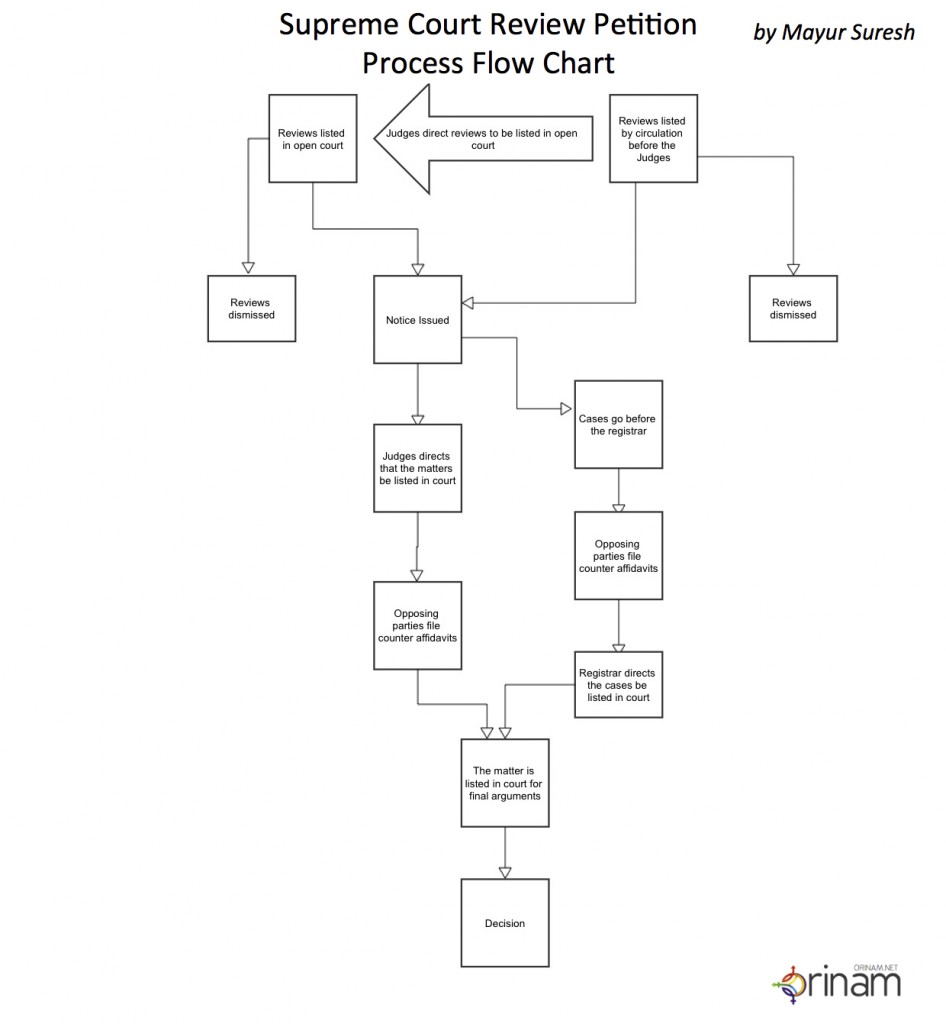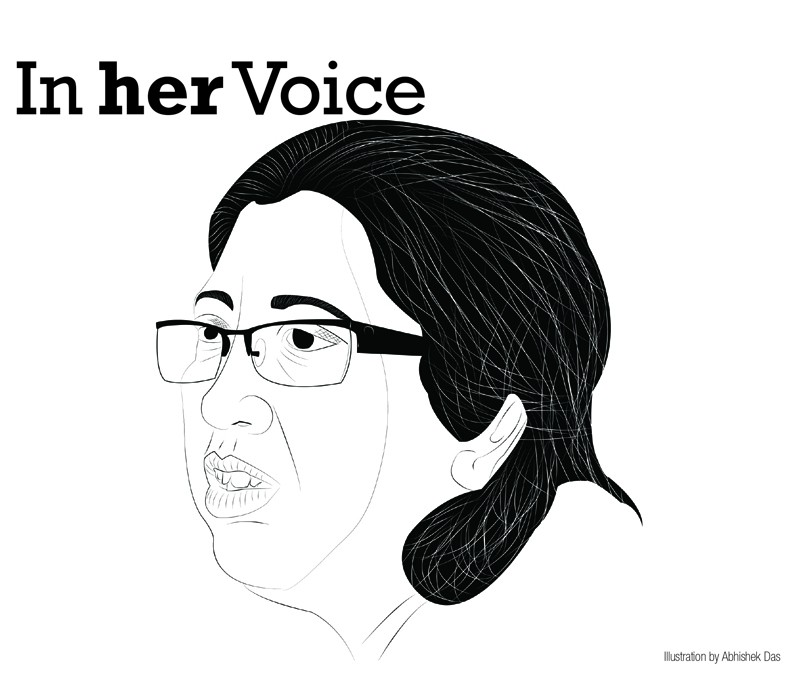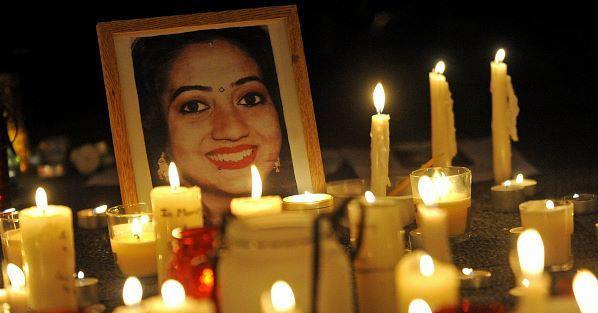377 Supreme Court Review Petition Process Explained
377 Supreme Court Review Petition Process explained by Mayur Suresh, with a nifty flow chart and all…
1) The case status page on the Supreme Court website indicates that the next date of listing for all the review petitions is January 29, 2014 January 28 , 2014, one day ahead of the previous listing.
- Naz Foundation v Suresh Kumar Koushal and Others RC 41-55
- Voices Against 377 v Suresh Kumar Koushal and Others RC222-233
- Minna Saran v. Suresh Kumar Koushal RC 219
- Shekhar Seshadri v. Suresh Kumar Koushal RC 221
- Ratna Kapur v. Suresh Kumar Koushal RC 211
- Nivedita Menon v Suresh Kumar Koushal RC 198
- Union of India v. Suresh Kumar Koushal RC 198
- Shyam Benegal v. Suresh Kumar Koushal RC 202-204
What this means is that in all likelihood the case will be listed on that date. We will only have 100% confirmation that it will be listed when the list for the 29th 28th comes out i.e. on 28th 27th evening. (Just FYI, there were several times in between 2009 and 2012 when the case status showed a next date of listing, but the case was never actually listed on the dates shown by the SC website). 2) The Rules also state that the judges who decided the case in the first place ought to be the ones to decide the review. In our case, it will be Justice Mukhopadhyay sitting with at least one other judge. Who the other judge(s) is, is a decision left up to the Chief Justice. 3) The Supreme Court rules of procedure state that ordinarily a review petition will be disposed of by circulation – which means by the judges by themselves, without any lawyers present. However, the Court may direct, an open hearing in court. We’ll only know which one it is when the list comes out on the 28th 27th (To my knowledge, all of the review petitions filed in the 377 case ask for an open hearing). This means that on the 29th 28th there are two options
- It is circulated to the judges
- It is heard in open court. If it’s option (a), the judges may either (i) dismiss the review petitions (ii) direct that the matter be listed before open court (iii) issue notice. Once/If it’s listed in open court, the judges may either (i) dismiss the review petitions (ii) issue notice
4) If they issue notice, they will either give a date for the next date of listing or (in the ordinary course) the cases go before an officer called the Registrar, who will make sure that all the paper work is in order – (but the court can direct that the matter be listed in court again) 5) The opposite parties will be given time to file counter affidavits. After which the cases ought to be listed for arguments. 6) The big question on everyone’s mind is probably the question of stay. To my knowledge, all of the review petitions, barring the Union Government’s) have asked for an interim stay of the judgment. Meaning that we’re asking that while the case is being processed and heard, we want the judgment passed by Singhvi and Mukhopadhyay to be put on hold. I’m not sure when the opportunity will arise for arguments on this application for interim stay of the judgment, but my guess is that this a stay will be pressed for at the first opportunity in open court (if we ever get to that stage). The judges may either issue an interim stay of the judgment, or may issue notices on the application for interim stay. If they do the latter, then a date will be fixed for hearing the application separately where the opposing parties will be given an opportunity to oppose our arguments. The judges can then decide whether they want to grant a stay or not. 7) Another question is probably time lines. There’s no time bound procedure for the review process. But to give you an indication – in a recent judgment which was reviewed – the RTI judgment – there was a time gap of one year between the date of the date of the first judgment and the 2nd judgment which reviewed the first.
PDF version of the flowchart available here. Created by: Mayur Suresh
See eve-of-Jan 28 opinion pieces by Vikram on Orinam and by Dhamini on Queer Ink.







7 Comments